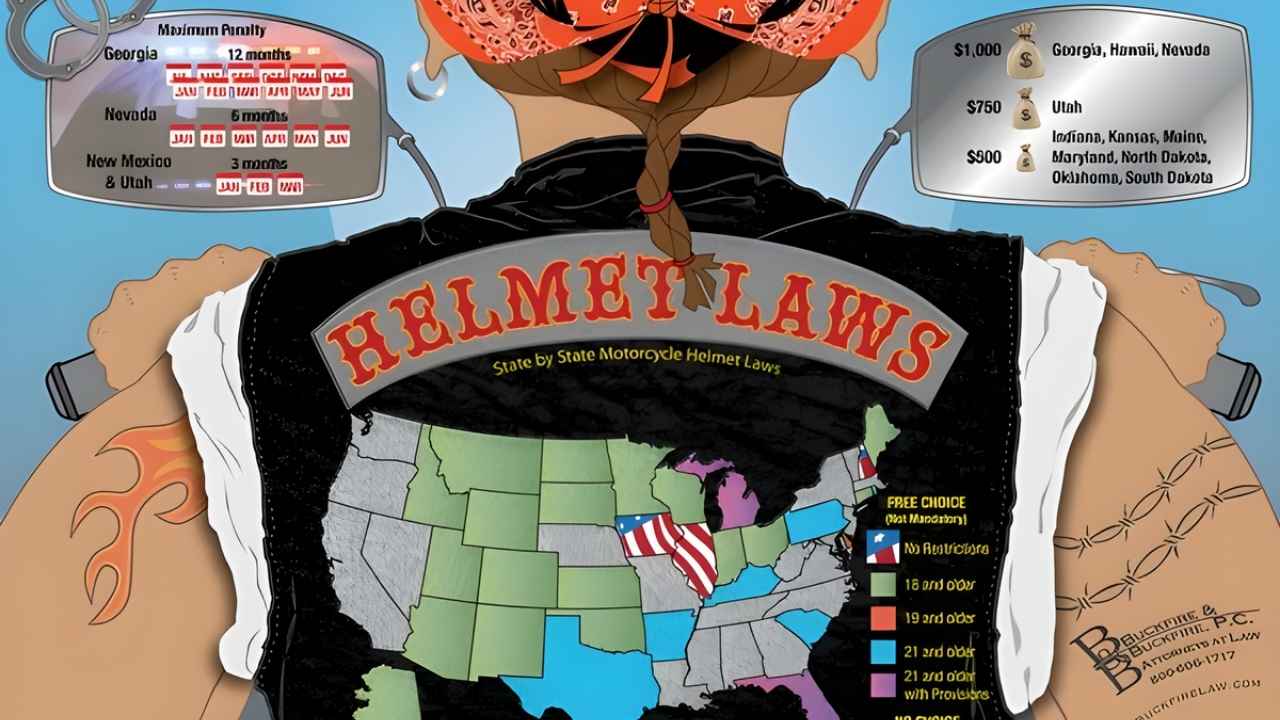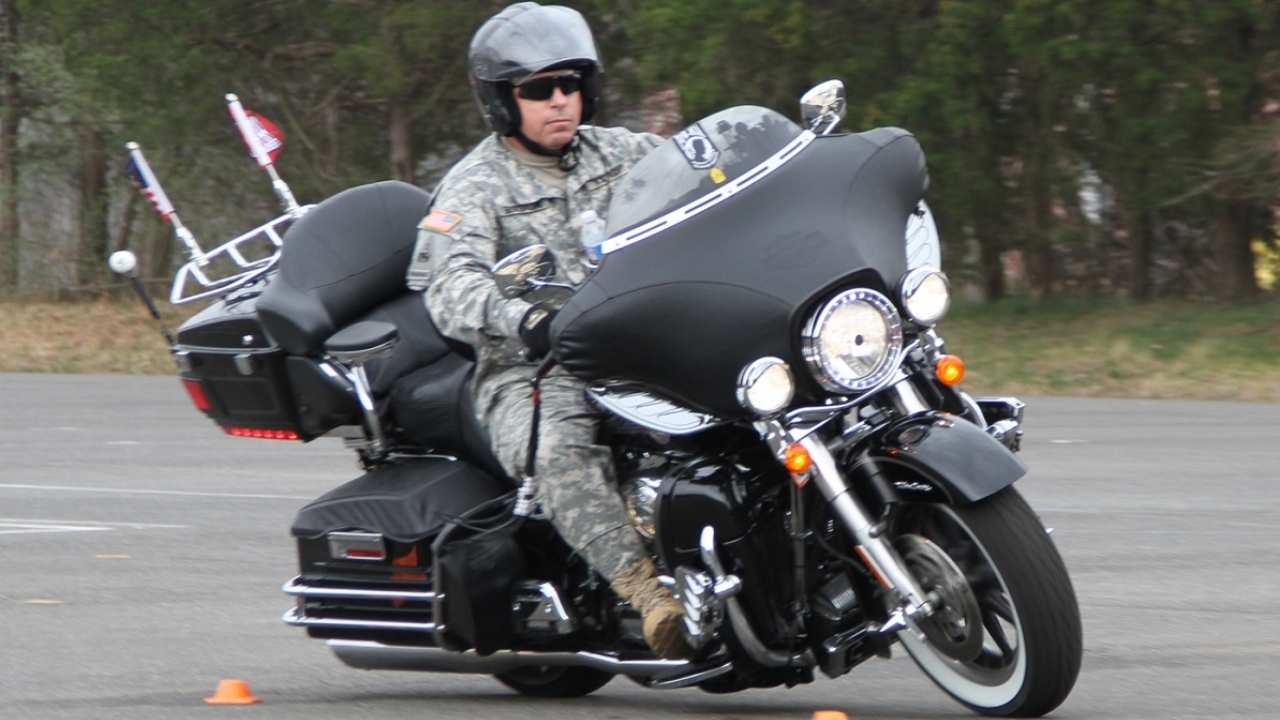Beginning 1 October 2025, Connecticut will expand its safety mandate, all riders and passengers under 21 must wear helmets. In addition, certain high power e-bikes (above 3,500 watts) will treat as motorcycles, meaning helmets, registration, and licensing rules will apply. Repeat violations could result in fines of up to $250.
This highlights a nationwide pattern, states are adjusting safety policies as motorcycles, e-bikes, and mixed traffic reshape road dynamics. If you Are traveling across state lines, it is crucial to keep track of changing helmet requirements. So here is all about what’s mandatory in 2025, so you don’t get caught off guard on the road.
Breaking Down US Helmet Laws: Stay Legal, Stay Safe
Connecticut’s October 2025 helmet law update for riders under 21 is sparking nationwide attention. Social feeds highlight safety concerns, while riders debate whether similar universal rules will spread across other states.
On TikTok and Instagram, motorcycle influencers highlight the helmet divide; states with strict universal laws like California contrast sharply with freedom-focused states like Iowa and New Hampshire, fueling viral debates.
With partial helmet laws in nearly 28 states, long-distance bikers post trip maps online. Viral discussions urge riders to check helmet rules carefully before crossing borders to avoid fines.
Three Main Types of Helmet Laws
- Universal Helmet Laws
- About 17 states plus Washington, D.C. require every rider and passenger to wear a helmet at all times.
- Examples – California, New York, Virginia, North Carolina, Washington.
- Partial Helmet Laws
- Roughly 28 states enforce rules tied to age, licensing, or insurance coverage. For example, helmets may only be mandatory for riders under 18 or 21.
- Examples – Texas, Florida, Arizona, Indiana, Pennsylvania.
- No Helmet Laws
- Only three states; Illinois, Iowa, and New Hampshire, allow adults to ride without any helmet requirement.
- Examples – Illinois, Iowa, New Hampshire.
Because these laws vary so much, one cross-country trip can take you through three different types of helmet policies.
Simplified Snapshot
| Law Type | States Covered | Requirements | Example States |
|---|---|---|---|
| Universal | 17 + D.C. | Helmets required for all riders & passengers | CA, NY, NC, WA, VA |
| Partial | ~28 states | Rules tied to age, insurance, or license | TX, FL, AZ, IN, PA |
| None | 3 states | Adults free to choose; minors still restricted | IL, IA, NH |
Why Helmet Laws Still Matter?
Helmets greatly reduce the risk of head injuries and fatalities.
- States with universal helmet laws report significantly higher compliance.
- When states weaken or repeal helmet mandates, injury and fatal crash rates usually rise.
- Without a federal law, your safety depends on local rules and your personal choice.
US Helmet Laws in Each State 2025
Here is a fresh, summarizing U.S. state helmet laws in 2025.
| State | Helmet Rule in 2025 | Comments / Age or Condition Limits |
|---|---|---|
| Alabama | All riders & passengers | No age exception, helmets required for everyone |
| Alaska | Riders & passengers 17 or younger | Adults may ride without if permitted |
| Arizona | Riders & passengers 17 or younger | Mopeds often excluded under certain engine limits |
| Arkansas | Riders & passengers 20 or younger | All ages after 20 may be exempt |
| California | All riders & passengers | Universal requirement without age carve-outs |
| Colorado | Riders & passengers 17 or younger | Adults beyond 17 have a choice |
| Connecticut | Riders & passengers 20 or younger | New rules may expand soon based on recent updates |
| Delaware | Riders & passengers 18 or younger; also new-license term | For first two years after endorsement, helmet required |
| D.C. | All riders & passengers | Universal mandate within the district |
| Florida | Riders & passengers 20 or younger | Older riders may exempt under certain insurance criteria |
| Georgia | All riders & passengers | No age-based exceptions |
| Hawaii | Riders & passengers 17 or younger | Adults may ride without helmets in many cases |
| Idaho | Riders & passengers 17 or younger | Helmet law applies only to younger group |
| Illinois | No Helmet law | Riders and passengers free to choose |
| Indiana | Riders & passengers 17 or younger | Adults not mandatorily required |
| Iowa | No Helmet law | No state requirement for any rider |
| Kansas | Riders & passengers 17 or younger | Adults may ride helmet-free |
| Kentucky | Riders & passengers 20 or younger | Partial rule based on age |
| Louisiana | All riders & passengers | No exemptions by age |
| Maine | Riders & passengers 17 or younger | Adults beyond 17 not required |
| Maryland | All riders & passengers | Universal rule in effect |
| Massachusetts | All riders & passengers | Helmets required for all |
| Michigan | Riders & passengers 20 or younger | Older riders exempt if certain criteria met |
| Minnesota | Riders & passengers 17 or younger | Partial rule for younger group |
| Mississippi | All riders & passengers | Universal coverage |
| Missouri | Riders up to 25 (or exp. conditions) | Adult exemption with insurance/training requirement |
| Montana | Riders & passengers 17 or younger | Only younger group mandated |
| Nebraska | Riders & passengers 20 or younger | Adults may ride without helmets (with training) |
| Nevada | All riders & passengers | Universal coverage |
| New Hampshire | No helmet law | No state mandate at all |
| New Jersey | All riders & passengers | Universal requirement |
| New Mexico | Riders & passengers 17 or younger | Adult exemption available |
| New York | All riders & passengers | Universal rule, all ages |
| North Carolina | All riders & passengers | No age exceptions |
| North Dakota | Riders & passengers 17 or younger | Adults not mandated |
| Ohio | Riders & passengers 17 or younger, plus novice riders | Additional rules for new-license holders |
| Oklahoma | Riders & passengers 17 or younger | Adults may ride without helmet unless other rules apply |
| Oregon | All riders & passengers | Universal coverage |
| Pennsylvania | Riders & passengers 20 or younger | Partial rule by age |
| Rhode Island | Riders & passengers 20 or younger; new-license term | Some newcomers required regardless of age |
| South Carolina | Riders & passengers 20 or younger | Partial rule |
| South Dakota | Riders & passengers 17 or younger | Adults not required |
| Tennessee | All riders & passengers | Universal helmet law |
| Texas | Riders & passengers 20 or younger | Adults 21+ may exempt if insurance/training criteria met |
| Utah | Riders & passengers 20 or younger | Age-based requirement |
| Vermont | All riders & passengers | Universal rule in place |
| Virginia | All riders & passengers | No age carve-outs |
| Washington | All riders & passengers | Universal coverage |
| West Virginia | All riders & passengers | Universal rule |
| Wisconsin | Riders & passengers 17 or younger | Adults may not have to wear |
| Wyoming | Riders & passengers 17 or younger | Adults optional beyond this age |
Note – Always check current local law before riding, laws may change.
Beyond Helmet: Extra Rules
- Helmet Standards
- Many states require DOT/FMVSS 218–approved helmets with proper liners, padding, and chin straps.
- Eye Protection
- Where helmets aren’t mandatory, goggles or windshields may be required.
- Penalties
- Fines typically range from $25 to $500; repeat violations can cost more.
Insurance Loopholes Some states let adults ride without helmets if they carry extra medical insurance or pass safety training.
Connecticut’s Helmet Expansion in 2025
The October 2025 update in Connecticut is a signal that more states may broaden helmet laws to cover young riders and new vehicle classes. By including high-powered e-bikes, lawmakers are acknowledging the growing risks of fast electric bikes on public roads.
Why Universal Rules Work Best?
According to studies, states with universal helmet laws enjoy –
- Higher compliance rates.
- Fewer hospitalizations for head injuries.
- Lower long-term medical costs for both riders and the public.
When helmet mandates are rolled back, the opposite occurs; more injuries, higher medical bills, and preventable fatalities.
What Every Rider Should Do?
- Check the law before riding across state lines.
- Choose a certified helmet that meets federal safety standards.
- Don’t rely on age exemptions, your safety is worth more than loopholes.
- Keep documentation if insurance or training certifications allow you to ride without a helmet in some states.
- Lead by example, wear your helmet even when not legally required.
Motorcycle Helmet Rules America Can’t Ignore
In 2025, helmet laws across the U.S. remain a patchwork; strict in some states, loose in others, and nonexistent in a few. But one fact never changes; helmets save lives. Whether the law requires it or not, protecting your head is one of the simplest and smartest choices you can make on two wheels.











